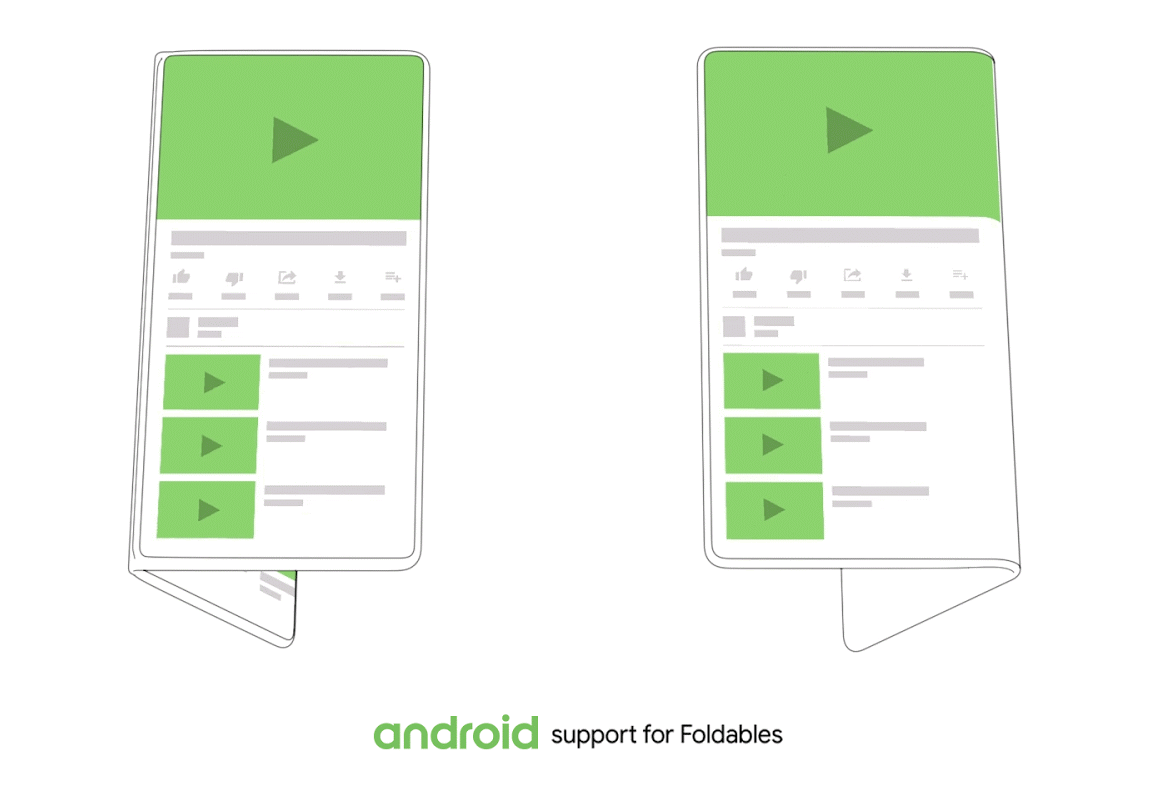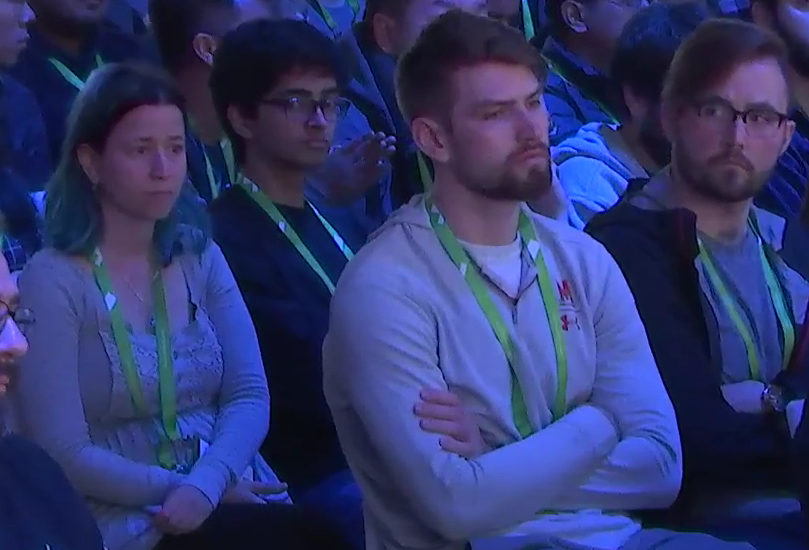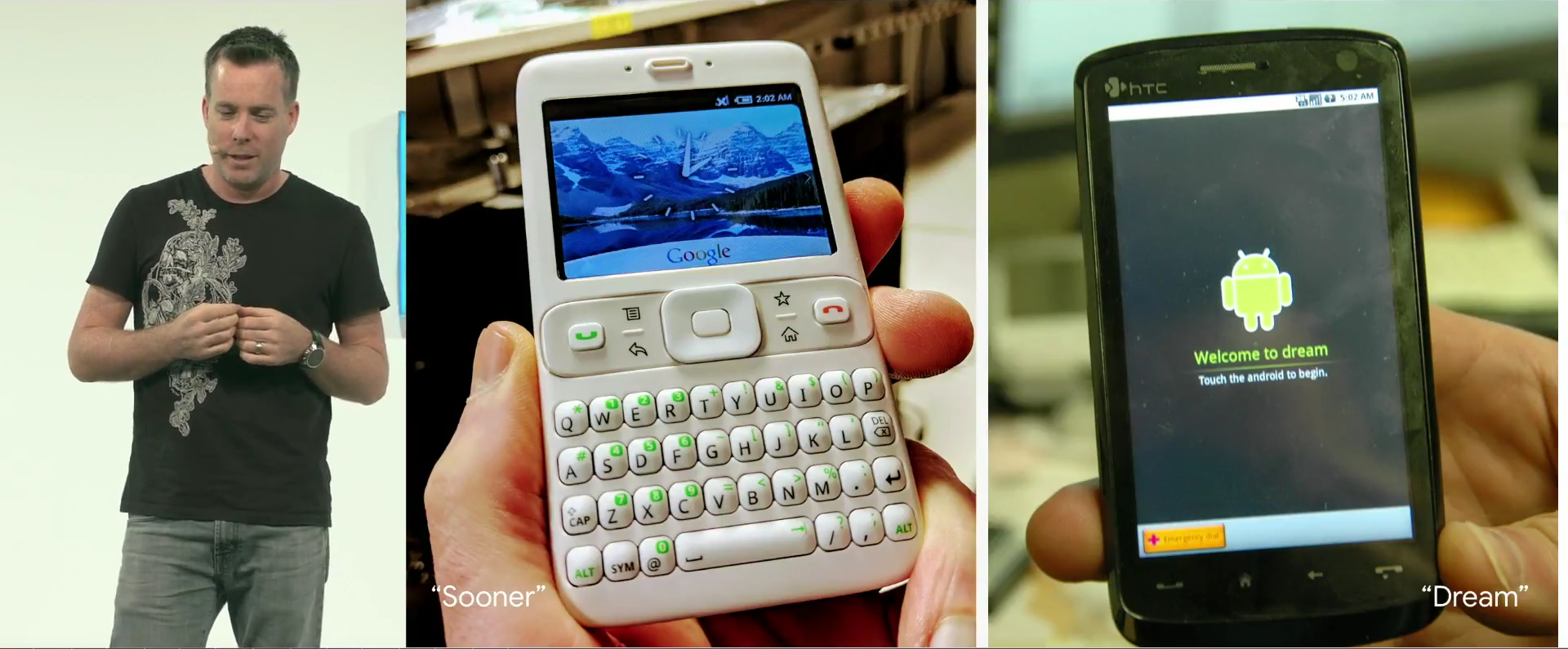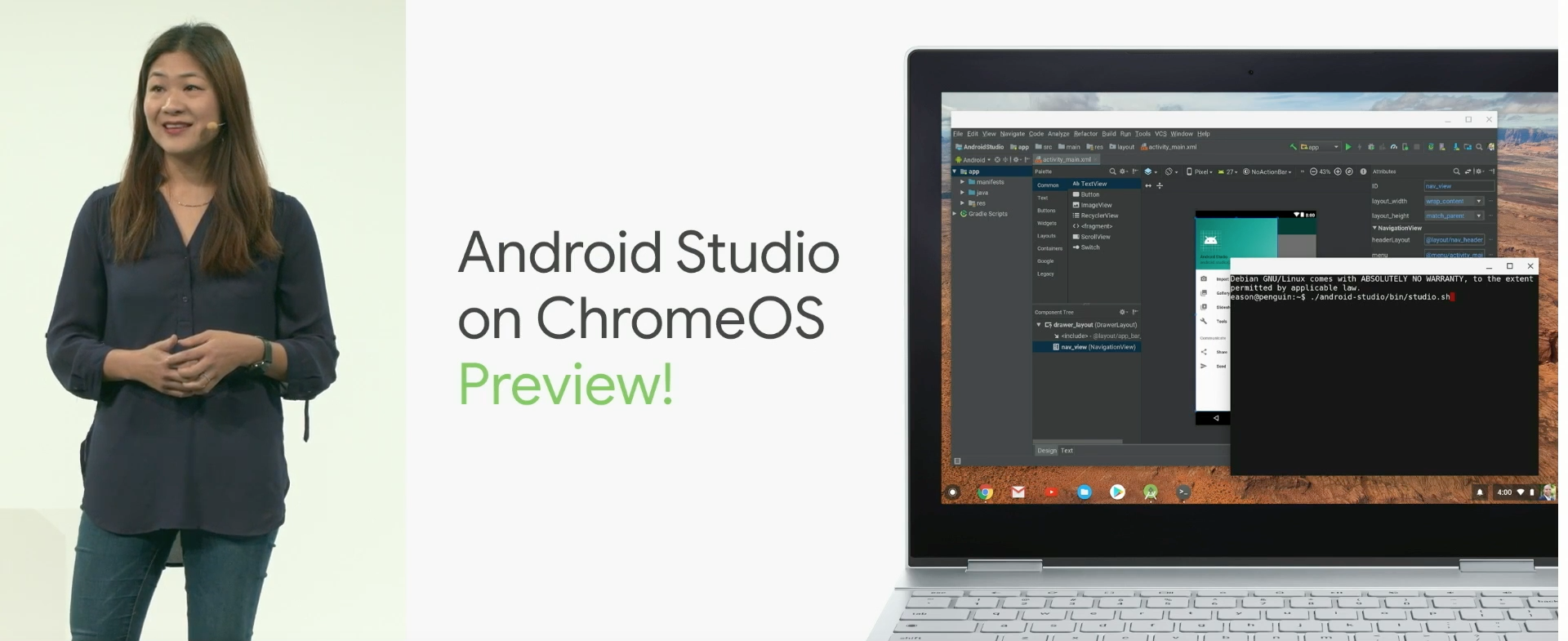Bending smartphones and other information with Android Dev Summit

Now Google is running an Android Dev Summit, and the opening keynote has already taken place. Basically, what was told there is intended for Android developers, but there is also news that could interest the wider masses: “bending smartphones”. Carefully looking online broadcast, we wrote about the support of such devices, and other information from keynote.
Clamshell return
As it is easy to see, the screens of smartphones are becoming more and more. But now there is nowhere else to do the devices themselves, and the front side was used entirely - what next? It turns out to fold in half with the help of bending screens.

')
Synchronously held two announcements. Samsung showed a prototype of a device with an Infinity Flex Display screen at its event: it can be used as a regular smartphone with a not very large display, but it can be deployed and a 7.3-inch hides inside. And Google on Android Dev Summit announced support for this approach in Android: this support means, for example, that you can start watching a video on a folded device, and then expand it, and it will continue on the big screen from the same place.
The output of the Samsung smartphone is scheduled for next year, and Google adds "wait for models from other manufacturers." While the situation is at the stage of the prototype, not all the details are clear (in the literal sense: Samsung showed its device in the semi-darkness, not allowing it to fully see it). But in any case, it is curious that Google supports such a bold experiment at such an early stage. For comparison, when the Essential company was the first in the world to announce a phone with a “bang” (and it was unclear how it would be accepted), it did it on its own - and only then, when the bang started to spread everywhere, did they add official support to Android.
That is, apparently, Google strongly believes in the future of a “folding” approach. It just seems that Android developers are not very encouraged by the prospect of supporting this in their applications. While from the Android Dev Summit stage, words like “we're excited” rang out, the audience sat with this air:

What else was in keyout?
Past and future
To begin, summed up the results of 10 years of Android - from how it all began, to the future. It's funny that this part turned out to be very similar to our “10 years of Android” habrapost : even when we went to what was waiting for us, two of the three mentioned directions of development were already described by us. But there are curious additional details.
Speaking about the time preceding the release of Android 1.0, they directly admitted from the stage that the output of the iPhone then had a strong influence on what was happening. Not only did the word “iPhone” be heard at the Google event, but also in conjunction with the word “awesome” - and the earth did not open. But at the same time, the company offered its own version of the story, somewhat different from the well-known. According to her, at the time of the appearance of the iPhone on Google, they were already thinking about two different android phones: it was supposed to release the button quickly, and later reach the touchscreen. And the output of the iPhone did not open the company's eyes to the fact that the touch screens are cool, but only forced it to speed up the work on the second device, which was already in the plans. Believe?

And what are the three directions of development in the future? Two of them, which we have already written about, are “smart smartphones” (AI, ML, that's all) and Android outside smartphones (TV, cars, watches). And the third is “safety and wellbeing”: they say it is important that smartphones improve life, and not worsen. That is, the recent innovations of Android Pie are not limited to, the company sees this as a strategic direction.
Android Studio and ChromeOS
In the case of Android Studio, there were common words (“we feel your need to speed up the build”) and a small release (version 3 beta 3 was released), but all this was not a surprise for those who follow the development of the IDE. But what information was new: next year, Android Studio will be officially supported on ChromeOS.

Months ago, as soon as ChromeOS had the opportunity to run Linux applications (and therefore Android Studio), enthusiasts began to use the Pixelbook in Android development: this is a powerful laptop, it is directly from Google, and when you develop an Android application on it, this application itself can be directly on the Pixelbook and installed. But despite the attractiveness of this approach, those who tried said “so far everything is damp, ChromeOS will begin to really approach development later.” And now, it seems, this time is coming.
Given how many professionals are unhappy with the current MacBooks (keyboards are problematic, the touchbar is controversial, prices are still high), top chromebooks can compete for the hearts of Android developers. Although here, too, there are some nuances: last year's Pixelbook in 2018 did not receive an update, and the new Pixel Slate still looks like a tablet in the first place.
Problems with moderating Google Play
Keynout in between times, trying not to emphasize this, said something like: “If you’ve encountered an unreasonable deletion of your application from Google Play and couldn’t challenge it, then know what we think about you and at the summit separate discussion.
With how calmly it was pronounced, there is a lot of tension behind these words. Recently, more and more stories have surfaced about how indie developers, at the whim of the algorithm, lost their application (in no way violating the rules), and when they tried to restore justice, they received only automatic messages from robots. As a result, dissatisfaction with this in the community came to appeals to organize protest actions on the Android Dev Summit. And the words from keyout, translated into simple language, sound like this: “Do not protest actions, let's understand humanly, we agree to the negotiations”.
Let's look at the results of these negotiations - perhaps it will make sense in a separate habrapost, which examines the situation in more detail.
In-App Update API
They also talked about the new API , with which the application during its use can inform the user "let me update." There are two options: an ad that blocks content at all (this is for urgent updates that fix critical bugs), and a less annoying ad downstairs, with which you can continue to use the application.
On the one hand, of course, the benefits of this can be. On the other hand, there are fears in the community that this can be used to the detriment (“I see how an indie developer sells his application to some kind of advertising nastiness, and it forces everyone to upgrade”). On the third - the developers, in any case, could already do this, just with more effort and less natively.
Android Dev Summit videos
You can see the entire keyout yourself - it is available on YouTube (even Google would not put it on your service). And after it began technical sessions, and they also promptly spread. So, if you are interested in Android technical reports, open this playlist .
And if you are interested in Android technical reports, but you are also interested after any report how you should ask the speaker, and you also want to talk with other Android developers, we draw your attention: on December 8-9, we will hold Mobius in Moscow , and there it will be that's all. iOS won't be offended either - you can watch the program , there any mobile developer will find something for himself.
Source: https://habr.com/ru/post/429144/
All Articles